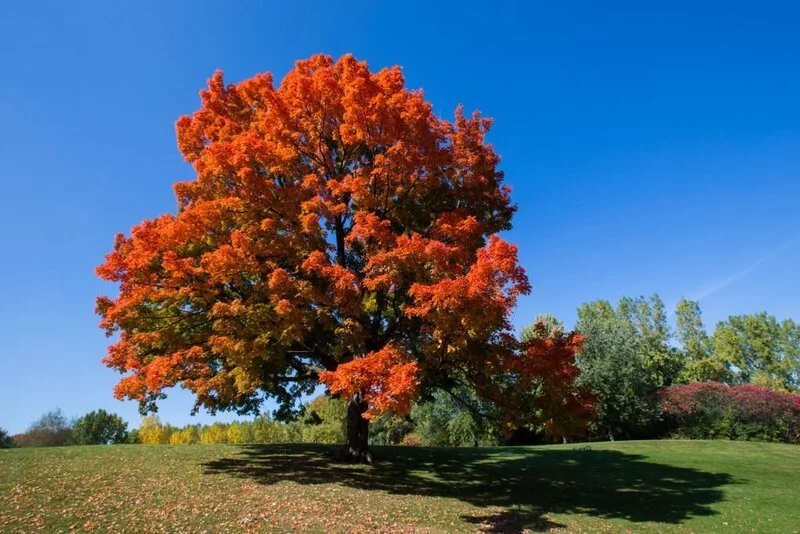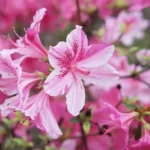Imagine a tree that paints the landscape with brilliant shades of orange, red, and yellow each fall. Yes, we’re talking about the magnificent maple tree! Maples are well-known and well-loved for their vibrant autumn colors and the sweet sap they provide. But have you ever wondered how long these beautiful trees live? Let’s embark on an exciting journey to discover the lifespan of a maple tree and delve into the factors that influence its longevity.
Maple Trees
Maple trees belong to the genus Acer, which comprises approximately 128 species. These diverse trees come in all shapes and sizes, from towering giants to petite shrubs. They’re spread across the cooler regions of the Northern Hemisphere, from North America to Europe and Asia. A few hallmarks of maple trees include their iconic leaf shape, which adorns the Canadian flag, and their winged seeds, often called “helicopters” because of the way they whirl and twirl to the ground.
Maples aren’t just about beauty, though. They also play a crucial role in the ecosystem, providing food and shelter to various wildlife species, and are an essential source of timber and delicious maple syrup.
Lifespan of Common Maple Trees
Just as people have different lifespans, so do maple trees. The lifespan of a maple tree largely depends on its species.
- The Sugar Maple, for instance, is a long-liver. It can grace our landscapes for 300 to 400 years under ideal conditions. It’s this long lifespan that enables the tree to produce high-quality timber and buckets of sap for maple syrup.
- The Red Maple, one of the most widespread and adaptable trees in North America, can live for around 100 to 150 years.
- The Silver Maple, named for the silvery underside of its leaves, is often found in urban areas due to its fast growth. However, it’s generally shorter-lived than its counterparts, with an average lifespan of 100 to 130 years.
Isn’t it fascinating to realize that the maple tree in your backyard might be older than your great-great-grandparents and could live to see your great-great-grandchildren?
- For sale is one Sugar Maple tree that is approximately 10-18″ tall shipped in a quart pot
- Hardy Zones: 3-8
- Please note: If you order during the months from October-April, your plant will arrive in its natural dormant state, meaning it will not have any leaves
- CALIFORNIA orders ship bareroot while dormant only from November-April
Factors Affecting Maple Trees Lifespan
Like all living things, a maple tree’s lifespan isn’t just determined by its species; various external factors come into play as well.
- Location and Climate: Maples are cold-loving trees. A tree grown in its ideal climate will generally live longer than one grown in less favorable conditions.
- Soil: Maple trees prefer well-draining soil. Trees grown in waterlogged or compacted soil can become stressed, reducing their lifespan.
- Care: Proper pruning, watering, and fertilization can greatly impact a tree’s longevity.
- Pests and Diseases: Certain pests and diseases can significantly shorten a maple tree’s life. Regular inspection and prompt treatment are vital for a long, healthy life.
- Happy Frog Japanese Maple Fertilizer contains phosphorus and potassium to support the needs of these beautiful trees
- It is formulated for Japanese maples and all low pH feeders and evergreens
- Happy Frog Japanese Maple Fertilizer is specifically formulated for use on Japanese maples, lilies, evergreens, hydrangeas, junipers, dogwoods, flowering ornamentals, and other low pH feeders
- JAPANESE MAPLE FERTILIZER: Japanese maple fertilizer designed to be the ideal addition to your backyard’s nutrient stock
How to Prolong the Life of Your Maple Tree
So, how can we ensure our beloved maples live a long and happy life? Here are a few tips:
- Plant your maple in a suitable location where it has room to grow and access to full or partial sunlight.
- Water your tree regularly, especially during dry spells, but be careful not to overwater.
- Prune your maple correctly and at the right time (usually late winter or early spring) to avoid unnecessary stress or disease.
- Monitor for signs of pests or diseases. If you spot anything concerning, consult a local extension service or a certified arborist.
Remember, a happy tree is a long-lived tree!
- GARDENING ESSENTIAL: Steel blade plant shears ideal for a variety of pruning tasks like cutting flower stems; gardening shears with bypass action are Ideal for cutting delicate stems as the bypass action is less likely to cause damage to the stems
- MAXIMUM POWER AND PRECISION: Fiskars pruning shears with low-friction blade coating makes smooth cuts, reduces gumming, and enhances rust resistance; the hand pruners with steel blades stay sharp through heavy use and provide excellent durability
- SMART FEATURES: Garden Scissors- Heavy Duty, with self-cleaning sap groove keeps blades from sticking and non-slip grip handle and easy-open lock allows for more control of garden clippers (handheld); fits well in most pruner holsters
- QUALITY GARDEN TOOLS: Designed to help you cultivate a better garden, Fiskars pruning shears are equipped with smart technologies and award-winning, ergonomic features that make it easier and more enjoyable to transform your outdoor space
- INCLUDES: Fiskars Bypass Pruning Shears that make great clippers for gardening; Full lifetime warranty
Importance of Maple Trees
Maple trees are not just stunningly beautiful additions to our landscapes; they also play a significant role in our lives and the environment. They provide shade and shelter for a variety of wildlife, improve air quality, and even contribute to climate regulation. Economically, they are valuable for their timber, and of course, the sweet sap of certain species gives us delicious maple syrup! These long-living trees truly are gifts that keep on giving.
Frequently Asked Questions
Why is my maple tree dying?
This could be due to many reasons, like disease, pest infestation, or environmental stress. It’s best to seek advice from a local arborist or extension service.
Can I grow a maple tree in a warm climate?
Some maples can tolerate warmer climates, like the Red Maple. However, remember that maples are generally cold-loving trees, so they may not thrive as well in warm areas.
How can I tell the age of a maple tree?
The most accurate way is by counting the rings in the tree trunk, but this involves cutting down the tree. An alternative way is by measuring the tree’s circumference and using growth factors specific to the species.
Conclusion
And there you have it! The stately maple tree, with its blaze of autumn color and sweet sap, isn’t just a seasonal marvel; it’s a testament to the passage of time, standing tall and robust for centuries. The lifespan of a maple tree is shaped by its species, environment, and the care we provide. As we’ve discovered, with a little love and attention, these leafy giants can thrive for hundreds of years, gracing future generations with their breathtaking beauty. So, the next time you marvel at a maple’s fiery fall display or drizzle maple syrup on your pancakes, spare a thought for the incredible journey these trees have taken through time.








